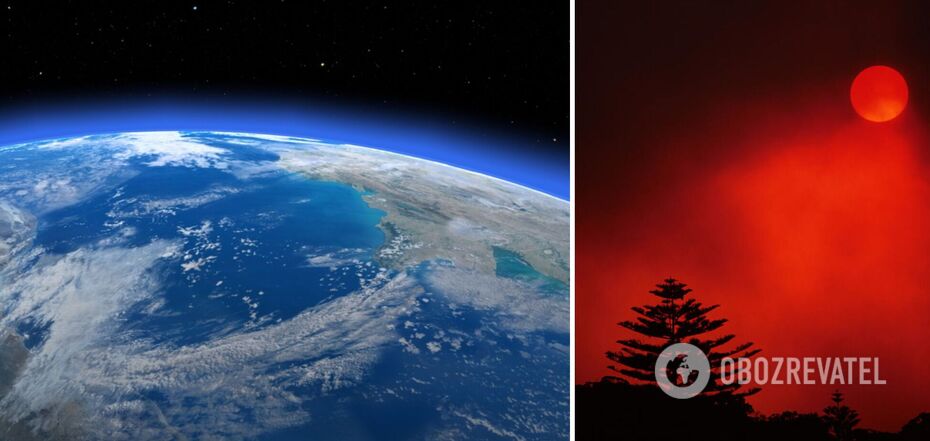Life
The sun will turn red and the sky will turn pale: scientists have come up with a salvation for the Earth, but there is a nuance
Researchers have found that the abandonment of fossil fuels, which aims to stop global warming on Earth, can lead to the opposite process, as emissions of particulate matter (aerosols) reflect the sun's rays in the atmosphere. Scientists propose to replace aerosols by spraying sulphur dioxide into the atmosphere. But this is not the best idea.
The Intergovernmental Panel on Climate Change, which includes 60 scientists, has written an open letter to world leaders calling for increased efforts to study solar geoengineering to understand how it can help humanity in the future to reduce the Sun's influence on warming the Earth, Popular Mechanics writes. Simply put, they call for exploring the possibility of shading the Sun to save humanity.
In their letter, the experts warn that the temperature on Earth could rise by more than 1.5 degrees Celsius, which would be quite critical for humanity. They also note that even if humanity reaches zero emissions, there is still the problem of carbon dioxide, methane and other greenhouse gases that are already in the atmosphere.
"While emissions reductions are crucial, no level of reduction made now can reverse the warming effect of past and present greenhouse gas emissions," the letter says.
According to scientists, unlike greenhouse gases, another category of emissions from human activity, aerosols, "can work to cool the climate".
Scientists estimate that the current aerosols in the atmosphere, which result from pollution caused by human activity (mines, quarries, chemical plants, etc.), can reflect some of the sun's rays in the atmosphere and reduce their impact on the planet by a third.
However, aerosols are extremely harmful to the human respiratory tract, so humanity has no other option but to get rid of them. Therefore, scientists assume that if compliance with environmental standards leads to a decrease in the concentration of aerosols in the atmosphere, humanity will discover the extent of how warm our world really is.
"Aerosols cool the climate by scattering sunlight, and when they mix with clouds, they can increase cloud reflectivity and the time they last. Reducing aerosol emissions in the next few decades will quickly 'unmask' a significant but highly uncertain amount of climate warming," the letter's authors believe.
They also voiced an idea of how and what to replace aerosols with, suggesting that sulphur dioxide should be injected into the stratosphere on purpose - like the kind that erupts from volcanoes - to act as a reflector for sunlight. Scientists know for sure that sulphur dioxide will work, as volcanic eruptions have previously shown a general cooling effect on the planet.
But this idea also has its drawbacks. First of all, sulphur dioxide is toxic, and the deliberate injection of something that people cannot breathe is a concern.
Sulphur dioxide will also affect the way our world looks, as the sun will no longer be yellow, but bright red. And the sky itself will turn from blue to white.
However, scientists are convinced that these negative effects can be ignored, as the consequences of accelerated climate change are likely to be even worse.
The sulphur injection is proposed to be a temporary measure to buy scientists time to develop a truly effective method of reducing the temperature on Earth.
As OBOZREVATEL previously reported, one of these methods was recently proposed by researchers from the Smithsonian Astrophysical Observatory in Cambridge (USA). They proposed to use lunar dust, which will become a kind of space curtain on the path of the sun's rays to the Earth. But this requires building giant catapults on the Moon.
Subscribe to OBOZREVATEL's Telegram and Viber channels to keep up with the latest news.



























